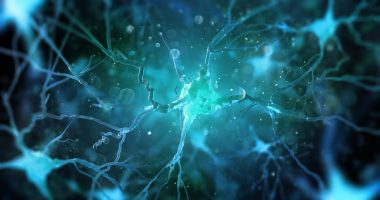Abnormalities Seen in Brain Cells Derived From Fragile X Patients
These astrocytes also had altered levels of proteins that may be therapeutic targets

Cell growth and signaling, as well as cholesterol production, are significantly altered in lab-grown astrocytes — the star-shaped brain cells that provide support to neurons — derived from people with fragile X syndrome, a study shows.
The patient-derived cells also had altered levels of a number of proteins that may represent new therapeutic targets for the neurodevelopmental disease, researchers noted.
“Our study sets a stage for understanding the role of astrocytes in the [development] of FXS [fragile X syndrome] and provides a human-based preclinical model for verifying and identifying molecular targets in FXS treatment,” they wrote.
The study, “Dysregulated cholesterol metabolism, aberrant excitability and altered cell cycle of astrocytes in fragile X syndrome,” was published in Glia.
Fragile X is caused by mutations in the FMR1 gene, leading to a lack of its protein product, FMRP, which plays an important role in regulating the production of other proteins.
Many of the proteins influenced by FMRP are involved in the maintenance of synapses, which are the sites where adjacent neuron cells communicate via chemical signaling molecules (neurotransmitters).
Thus, the effects of FMRP deficiency in neurons is well-studied, and is thought to primarily drive the cognitive and behavioral problems that characterize fragile X. However, the role of astrocytes — a type of brain glial cell that also produces FMRP — is less well-understood.
Astrocytes are small, star-shaped brain glial cells that support neurons
Astrocytes are a set of small, star-shaped cells known for their supporting roles for neurons, such as neuronal development, control of neurotransmitter levels, metabolic support, and maintenance of the right ion concentrations for cellular function.
A growing body of evidence suggests that astrocyte dysfunction may play a role in a number of neurological diseases, including fragile X. Specifically, cellular and behavioral abnormalities have been reported in astrocytes from preclinical fragile X models, suggesting that these cells may have a role in the disease.
However, it isn’t known whether astrocytes are similarly dysregulated in the brains of fragile X patients, a question that’s difficult to study in living humans.
To address this, a team of researchers in the U.S. generated astrocytes from induced pluripotent stem cells (iPSCs) derived from boys and men with fragile X. iPSCs are generated from fully matured cells, such as those in the skin or blood, that are reprogrammed back to a stem cell-like state, where they can give rise to almost every type of human cell.
iPSCs-derived astrocytes have all the same characteristics as the cells of the person they were derived from. In the study, these astrocytes were grown in the lab and compared with lab-grown astrocytes derived from the same patients but that were posteriorly edited in the lab to restore normal FMR1 gene activity (used as controls).
Our study sets a stage for understanding the role of astrocytes in the [development] of FXS [fragile X syndrome] and provides a human-based preclinical model for verifying and identifying molecular targets in FXS treatment.
Patient-derived astrocytes showed signs of a shortened cell cycle
Results showed that patient-derived astrocytes exhibited signs of having a shortened cell cycle compared with corrected cells. (The cell cycle is a set of well-defined steps during which a cell grows and replicates).
Patient cells also showed a significant increase in cyclin D1, a checkpoint molecule that plays a role in regulating the cell cycle.
A shortened cell cycle suggests that the cells may be able to grow in number faster than normal. Consistently, analysis of brain tissue from deceased fragile X patients showed a significantly greater number of astrocytes relative to healthy brain tissue, which might “impact neuronal and circuit function in FXS,” the researchers wrote.
Since astrocytes respond to nerve cell activity and environmental cues through calcium signaling, the team then assessed whether FMRP deficiency affected any of those responses.
They found that patient-derived astrocytes showed an increased calcium signaling-based response to certain cues compared with those modified to have normal FMRP levels.
Moreover, astrocytes lacking FMRP showed significant changes in the proteome, or the entire family of proteins in the body, relative to genetically corrected astrocytes. Among the most significant changes, 113 proteins were found at increased levels in patient-derived astrocytes, while 128 were detected at lower levels.
Some of these changes were expected, as they had been previously reported in preclinical models. These included an enrichment in proteins involved in translation (the process by which proteins are produced from a genetic blueprint), consistent with FMRP’s role in controlling protein production.
Fragile X astrocytes ‘in a heightened reactive state’
Other changes were surprising, the researchers noted, such as an increase in drebrin, a protein known to be involved in neuronal development, but which has more recently been found at increased levels in astrocytes after an injury.
This suggests that “FXS astrocytes are in a heightened reactive state,” the team wrote.
Moreover, fragile X-derived astrocytes showed alterations to the cholesterol production pathway that ultimately resulted in significantly lower levels of cholesterol. Notably, brain cholesterol is mainly produced by astrocytes and plays a critical role in synapse maturation.
“We developed a human astrocyte model of FXS and showed that loss of FMRP could lead to alterations in development and function of astrocytes,” the researchers wrote. They also “discovered new features of FXS astrocytes that have not been described previously.”
A deeper analysis of the protein changes observed in fragile X astrocytes “could identify additional human-specific targets with therapeutic potentials.”








